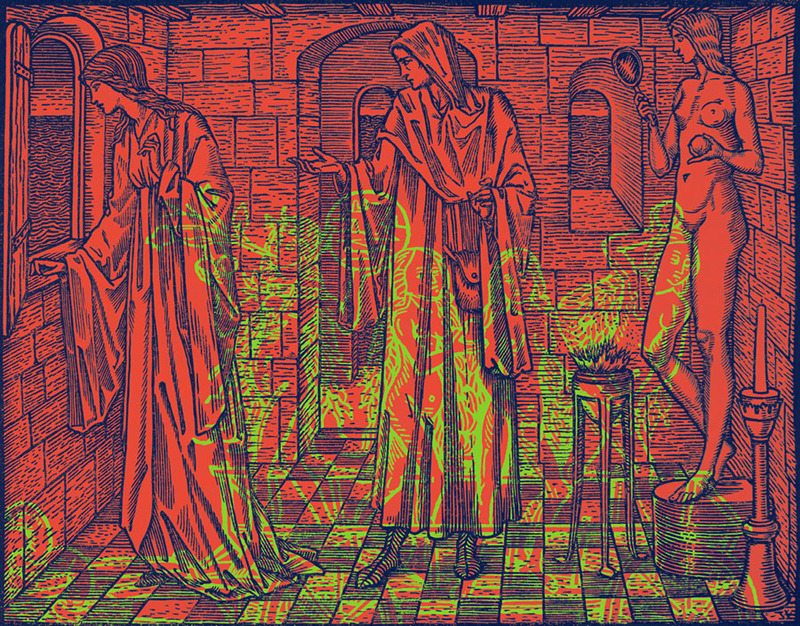The Influence of Medieval Design on the Arts and Crafts Movement
Introduction
The English Arts and Crafts movement of the nineteenth and early twentieth centuries was inspired by the medieval period, and its artists and craftsmen sought to emulate the beauty of the medieval book through intricate and elegant engraved printings and typefaces. This exhibit showcases select fifteenth and sixteenth century incunabula and items from the Triple Crown and Eric Gill Collections to show this connection between medieval book design and the book design of these fine private presses of the late nineteenth and early twentieth centuries.
In 2000 Washington University Library purchased the Triple Crown Collection, a large assembly of beautiful completed works, ephemera, printing proofs, wood blocks, correspondence, and business miscellany from three of the finest private book presses of the English Arts and Crafts movement: the Kelmscott Press, the Doves Press, and the Ashendene Press.
The English Arts and Crafts movement began in the Victorian period in reaction to the fragmentary and often miserable labor of the industrial revolution spawned factories. Inspired by the medieval period, artists, designers, and craftsmen, such as William Morris, sought to emulate the beauty of the medieval book through intricate and elegant engraved printings and typefaces.
From 1890-1896, William Morris’s Kelmscott Press printed thousands of books. Morris came up with the idea after hearing a lecture on art and types by the printer Emery Walker. After Morris’s death in 1896 the Kelmscott Press shut down. T.J. Cobden-Sanderson, a bookbinder and friend of Morris, had started a bindery and bound some of the Kelmscott books during the presses lifetime. After Morris’s death, Cobden-Sanderson joined with Sir Emery Walker, who had also worked with Morris as an engraver, to start the Doves Press in 1900. The two eventually parted ways over interests in the company, but not before creating beautiful editions of Dante’s works and the Bible.
Ashendene Press was began by Charles Harold St John Hornby in 1895 and closed in 1935 (having a five year hiatus from 1915-1920 because of the first World War). In 1900 St John Hornby met Emery Walker who helped him design his own typefaces. In addition, a celebrated wood engraver from the Kelmscott Press, William Harcourt Hooper, worked for them as an engraver from 1896 after the closing of the Kelmscott Press.
The final press, the Golden Cockerel Press, included in this exhibit comes from the 2005 purchase by the Washington University Library of the Eric Gill Collection. Eric Gill, now a controversial artist due to his known paraphilia and sexual abuse, was known as a writer and artist, engraving, drawing, and sculptor, he was the artist on the Golden Cockerel Press’s four gospels and their own editions of Chaucer’s works. This final press shows William Morris’s continued legacy of influence in art and design.
The works from these four private presses exemplify the beauty and legacy of the Arts and Crafts movement and how medievalism influenced modern literature, art, and design.
